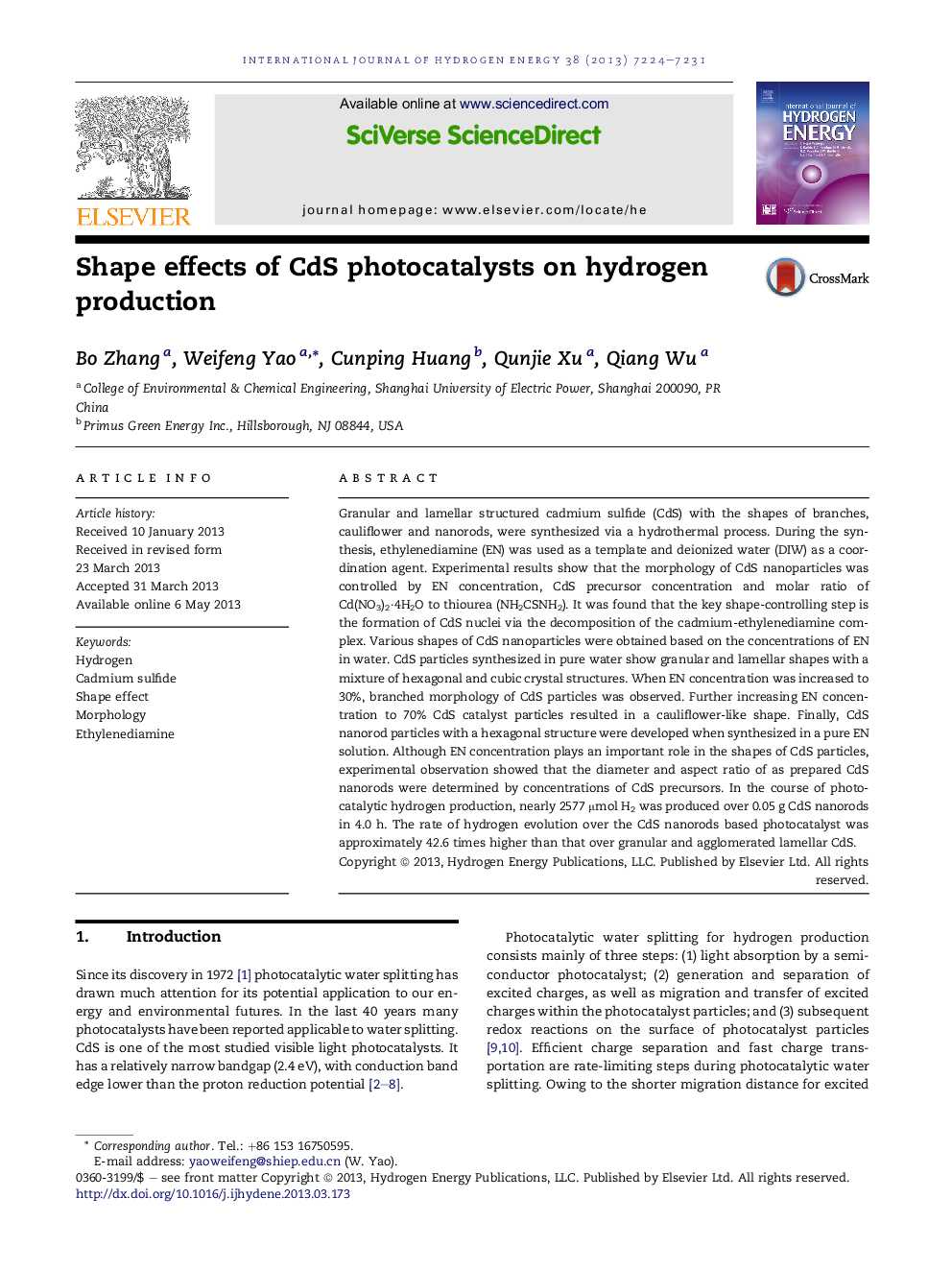| Article ID | Journal | Published Year | Pages | File Type |
|---|---|---|---|---|
| 7722909 | International Journal of Hydrogen Energy | 2013 | 8 Pages |
Abstract
Granular and lamellar structured cadmium sulfide (CdS) with the shapes of branches, cauliflower and nanorods, were synthesized via a hydrothermal process. During the synthesis, ethylenediamine (EN) was used as a template and deionized water (DIW) as a coordination agent. Experimental results show that the morphology of CdS nanoparticles was controlled by EN concentration, CdS precursor concentration and molar ratio of Cd(NO3)2·4H2O to thiourea (NH2CSNH2). It was found that the key shape-controlling step is the formation of CdS nuclei via the decomposition of the cadmium-ethylenediamine complex. Various shapes of CdS nanoparticles were obtained based on the concentrations of EN in water. CdS particles synthesized in pure water show granular and lamellar shapes with a mixture of hexagonal and cubic crystal structures. When EN concentration was increased to 30%, branched morphology of CdS particles was observed. Further increasing EN concentration to 70% CdS catalyst particles resulted in a cauliflower-like shape. Finally, CdS nanorod particles with a hexagonal structure were developed when synthesized in a pure EN solution. Although EN concentration plays an important role in the shapes of CdS particles, experimental observation showed that the diameter and aspect ratio of as prepared CdS nanorods were determined by concentrations of CdS precursors. In the course of photocatalytic hydrogen production, nearly 2577 μmol H2 was produced over 0.05 g CdS nanorods in 4.0 h. The rate of hydrogen evolution over the CdS nanorods based photocatalyst was approximately 42.6 times higher than that over granular and agglomerated lamellar CdS.
Related Topics
Physical Sciences and Engineering
Chemistry
Electrochemistry
Authors
Bo Zhang, Weifeng Yao, Cunping Huang, Qunjie Xu, Qiang Wu,
